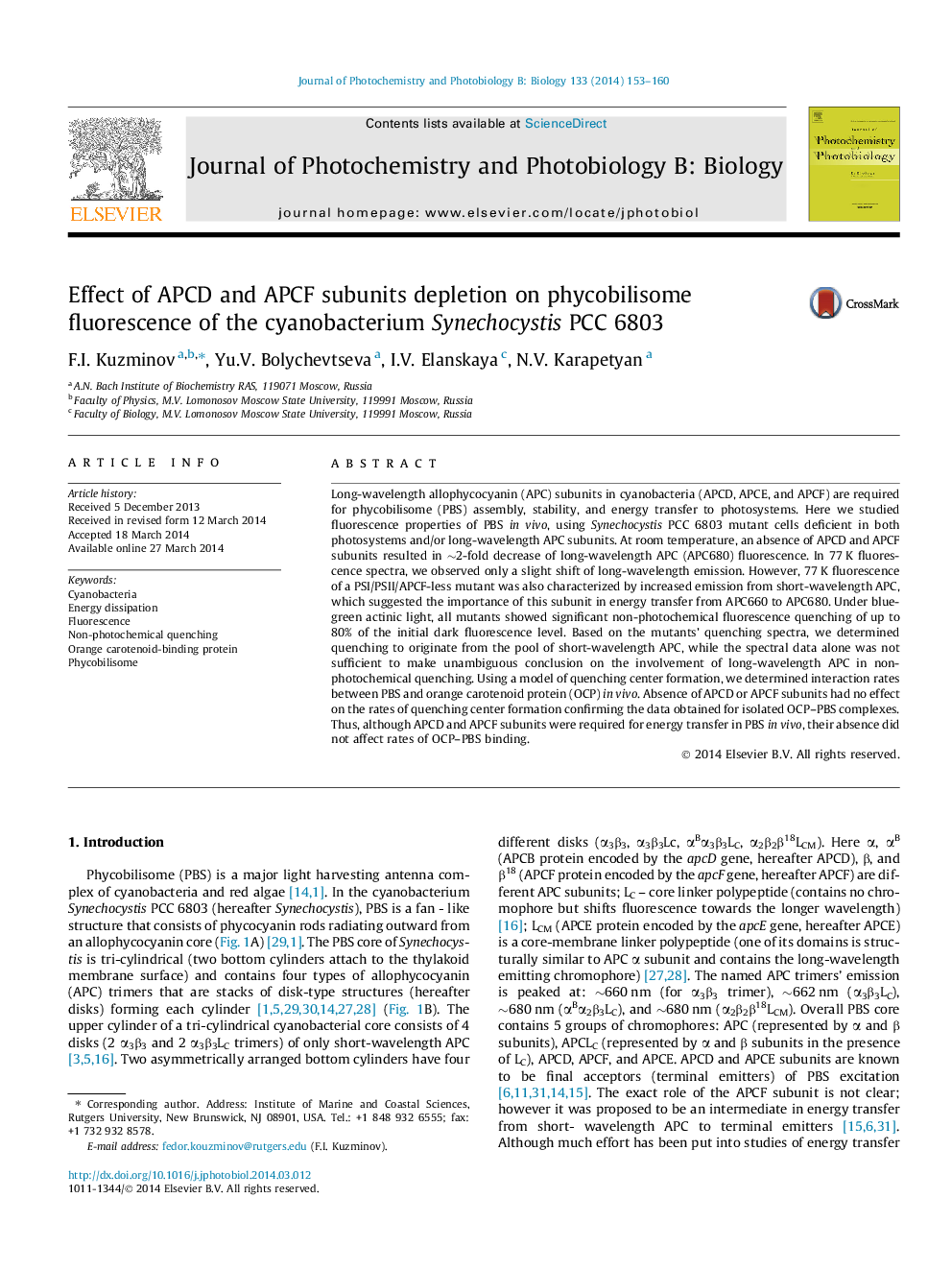| کد مقاله | کد نشریه | سال انتشار | مقاله انگلیسی | نسخه تمام متن |
|---|---|---|---|---|
| 30096 | 44459 | 2014 | 8 صفحه PDF | دانلود رایگان |

• APCD and APCF are not required for binding of OCP to phycobilisome in vivo.
• Absence of APCF and APCD alters energy migration in phycobilisome.
• APCF is required for energy transfer from short-wavelength APC to terminal emitters.
Long-wavelength allophycocyanin (APC) subunits in cyanobacteria (APCD, APCE, and APCF) are required for phycobilisome (PBS) assembly, stability, and energy transfer to photosystems. Here we studied fluorescence properties of PBS in vivo, using Synechocystis PCC 6803 mutant cells deficient in both photosystems and/or long-wavelength APC subunits. At room temperature, an absence of APCD and APCF subunits resulted in ∼2-fold decrease of long-wavelength APC (APC680) fluorescence. In 77 K fluorescence spectra, we observed only a slight shift of long-wavelength emission. However, 77 K fluorescence of a PSI/PSII/APCF-less mutant was also characterized by increased emission from short-wavelength APC, which suggested the importance of this subunit in energy transfer from APC660 to APC680. Under blue-green actinic light, all mutants showed significant non-photochemical fluorescence quenching of up to 80% of the initial dark fluorescence level. Based on the mutants’ quenching spectra, we determined quenching to originate from the pool of short-wavelength APC, while the spectral data alone was not sufficient to make unambiguous conclusion on the involvement of long-wavelength APC in non-photochemical quenching. Using a model of quenching center formation, we determined interaction rates between PBS and orange carotenoid protein (OCP) in vivo. Absence of APCD or APCF subunits had no effect on the rates of quenching center formation confirming the data obtained for isolated OCP–PBS complexes. Thus, although APCD and APCF subunits were required for energy transfer in PBS in vivo, their absence did not affect rates of OCP–PBS binding.
Journal: Journal of Photochemistry and Photobiology B: Biology - Volume 133, 5 April 2014, Pages 153–160